
CDP Technical Note: Accounting of Scope 2 emissions
CDP Corporate Questionnaire

Page 2 of 27 @cdp | www.cdp.net
Contents
1 ESSENTIAL READING ............................................................................................................. 5
2 INTRODUCTION TO SCOPE 2 ................................................................................................ 6
2.1 KEY CONCEPTS IN SCOPE 2 THAT IMPACT YOUR REPORTING TO CDP .......................................... 6
3 REPORTING YOUR SCOPE 2 EMISSIONS TO CDP .............................................................. 8
3.1 SCOPE 2 EMISSIONS TARGETS, TOTALS, BREAKDOWNS, AND INTENSITY METRICS ........................ 8
3.2 YOUR ACTIVITY DATA AND YOUR CONTRACTUAL INSTRUMENTS .................................................. 9
4 WHAT SCOPE 2 REQUIREMENTS IMPACT YOUR RESPONSE? ....................................... 10
4.1 DETERMINING WHETHER YOU SHALL DUAL REPORT .................................................................. 10
4.2 CHOOSING THE RIGHT EMISSIONS FACTORS (SCOPE 2 DATA HIERARCHY) .................................. 11
4.3 SCOPE 2 QUALITY CRITERIA ................................................................................................... 13
4.4 IF YOU CONSUME ENERGY FROM FACILITIES THAT YOU OWN/OPERATE ...................................... 15
4.5 IF YOU CONSUME PURCHASED ENERGY GENERATED FROM BIOFUELS ........................................ 15
5 OPTIONAL SCOPE 2 DISCLOSURES ................................................................................... 16
6 COUNTRY/AREA RESOURCES FOR EMISSIONS FACTORS ............................................. 17
6.1 LOCATION-BASED EMISSIONS FACTORS .................................................................................. 17
6.2 ENERGY ATTRIBUTE CERTIFICATE REGISTRIES ......................................................................... 17
6.3 SUPPLIER-SPECIFIC EMISSIONS FACTORS ................................................................................ 18
6.4 RESIDUAL MIXES .................................................................................................................... 18
7 FREQUENTLY ASKED QUESTIONS ..................................................................................... 20
8 WORKED EXAMPLES ........................................................................................................... 22
8.1 EXAMPLE 1 – ON-SITE PRODUCTION OF NON-GRID CONNECTED RENEWABLE ELECTRICITY OWNED
BY ANOTHER ORGANIZATION WITH NO TRACKING INSTRUMENTS GENERATED. .................................... 22
8.2 EXAMPLE 2 – A ORGANIZATION PURCHASING RECS IN THE USA.............................................. 25

Page 3 of 27 @cdp | www.cdp.net
Version control
Version
Revision date
Revision summary
1.0
February 8, 2013
First published version.
2.0
February 8, 2015
Updated to take in account new GHG Protocol Scope 2 Guidance and
other necessary updates.
3.0
February 18, 2016
Updated to align with the 2016 CDP climate change questionnaire
4.0
March 21, 2017
Minor updates to align with the 2017 CDP climate change
questionnaire.
5.0
June 7, 2018
Minor updates to align with the 2018 CDP climate change
questionnaire.
6.0
March 12, 2019
Minor updates including:
New countries adherent to the International REC Standard (I-REC
Standard) and Tradable Instruments for Global Renewables (TIGR
Registry) (Section 3)
New clarification on market-based approach (Section 1)
7.0
April 03, 2020
Updated to align with the 2020 CDP climate change questionnaire
including:
Revised structure of the document
Updated Glossary: “low-carbon energy”, “RE100” added
New definition of the market boundary criteria for claiming renewable
electricity use (section 2.3)
New countries adherent to the International REC Standard (I-REC
Standard)
New information about Taiwan and Japan certificate systems
7.1
July 03, 2020
Section 2.3 is updated with information on exemption for renewable
energy sourcing contracts signed before 31st December 2021
8.0
April 12, 2021
Updated to align with the 2021 CDP climate change questionnaire
including:
Revised definitions of green electricity/power, TIGRs and International
REC
Guidance added on questions companies can provide additional
information for
European residual mix figure source updated to AIB
Revised guidance on the use of REGOs in the UK following Brexit
Revised guidance to clarify the use of green gas certificates
9.0
March 11, 2022
Updated to align with the 2022 CDP climate change questionnaire
including:
Clarified guidance on the market boundary criteria exemption
Clarified guidance on best practice of EAC vintage
New information on Chinese GECs
Updated country and regional guidance and resources
10.0
March 7, 2023
Updated to align with the 2023 CDP climate change questionnaire
including:
Clarification of the market boundary criteria in section 2.3.
Clarification on the use of green gas certificates for renewable
electricity usage claims in section 3.5.
11.0
June 28, 2024
Structural changes, clarifications, new introduction.

Page 4 of 27 @cdp | www.cdp.net
About this document
This technical note outlines how your how reporting to CDP should meet the requirements in the
GHG Protocol Scope 2 Guidance. You should have a basic understanding of the Scope 2
Guidance before reading this technical note, especially around the dual reporting requirement, the
scope 2 data hierarchy, and the Scope 2 Quality Criteria.
CDP has an accredited solutions provider program that can connect you with experience and
expertise in scope 2 accounting, scope 2 emissions reductions initiatives (such as renewable
energy procurement), and in reporting these emissions to CDP. For more information about the
program please contact [email protected].
Copyright © CDP Worldwide 2024
All rights reserved. Copyright in this document is owned by CDP Worldwide, a registered charity number
1122330 and a company limited by guarantee, registered in England number 05013650.
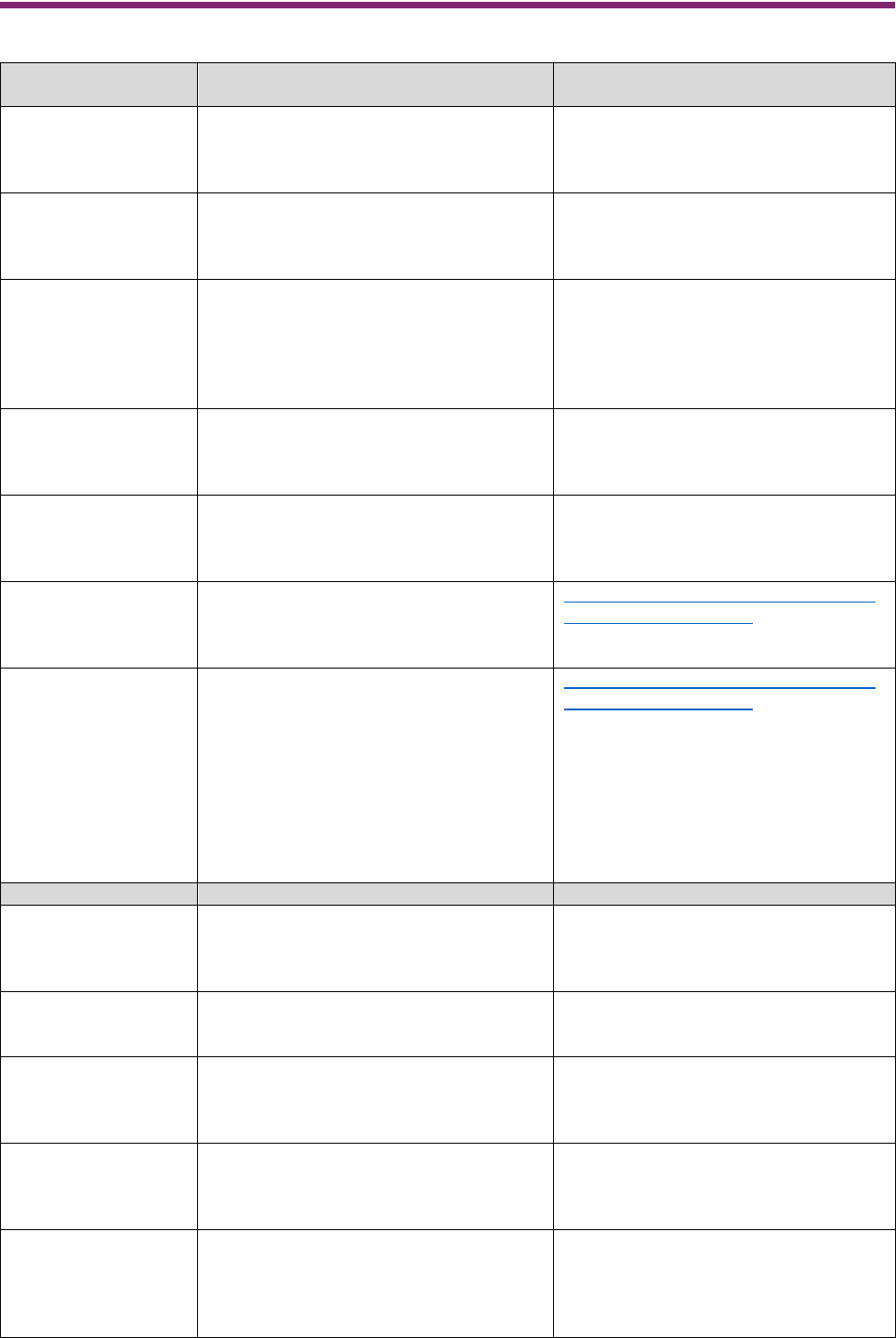
Page 5 of 27 @cdp | www.cdp.net
1 Essential reading
Key concept used
in this document
Summary
Please read
Scope 1
Direct GHG emissions occurring from
sources that are owned or controlled by
the reporting organization.
The Greenhouse Gas Protocol: A
Corporate Accounting and Reporting
Standard (Revised Edition): Chapter 4
(Setting Operational Boundaries)
Scope 2
Indirect (upstream) generation
emissions of purchased or acquired
energy.
The Greenhouse Gas Protocol: A
Corporate Accounting and Reporting
Standard (Revised Edition): Chapter 4
(Setting Operational Boundaries)
Scope 3
All other indirect (upstream or
downstream) emissions that occur as a
consequence of the reporting
organization’s activities, but occur from
sources not owned or controlled by the
reporting organization.
The Greenhouse Gas Protocol: A
Corporate Accounting and Reporting
Standard (Revised Edition): Chapter 4
(Setting Operational Boundaries)
Organizational
boundary
Defines the boundary of direct and
indirect emissions for operations that fall
within a reporting organization’s
established organizational boundary.
The Greenhouse Gas Protocol: A
Corporate Accounting and Reporting
Standard (Revised Edition): Chapter 3
(Setting Organizational Boundaries)
Operational
boundary
The assignment of emissions sources
into scope 1, scope 2, or scope 3 once
the organizational boundary has been
set.
The Greenhouse Gas Protocol: A
Corporate Accounting and Reporting
Standard (Revised Edition): Chapter 4
(Setting Operational Boundaries)
Inventory accounting
(also called
attributional
accounting)
Accounts for GHG emissions or
removals within a defined organizational
and operational boundary.
https://ghgprotocol.org/blog/inventory-
and-project-accounting
Project-based
accounting (also
called intervention or
consequential
accounting)
Accounts for the impacts or changes in
GHG emissions resulting from specific
projects, actions, or interventions
relative to a counterfactual baseline
scenario. It evaluates system-wide
emissions impacts of the project or
intervention in question, without regard
to the reporting organization’s
operational or organizational inventory
boundary.
https://ghgprotocol.org/blog/inventory-
and-project-accounting
Scope 2 terms
Summary
Please read
Dual reporting
A requirement for scope 2 emissions to
be reported using two different methods:
a location-based method and a market-
based method.
GHG Protocol Scope 2 Guidance:
Chapter 6 (Calculating Emissions) and
Chapter 7 (Accounting and Reporting
Requirements)
Location-based
method
Scope 2 emissions that account for the
average emissions characteristics of the
grid from which energy is purchased.
GHG Protocol Scope 2 Guidance:
Chapter 4 (Scope 2 Accounting
Methods)
Market-based
method
Scope 2 emissions that account for a
organization’s contractual instruments
for specified energy (or its lack of choice
in purchasing specified energy).
GHG Protocol Scope 2 Guidance:
Chapter 4 (Scope 2 Accounting
Methods)
Scope 2 data
hierarchy
A hierarchy of instruments and data
sources for calculating market-based
scope 2 emissions at different levels of
accuracy.
GHG Protocol Scope 2 Guidance:
Chapter 6 (Calculating Emissions)
Scope 2 Quality
Criteria
A set of criteria for determining whether
a given contractual instrument can be
used to make a market-based scope 2
claim for a given quantity of energy
consumption.
GHG Protocol Scope 2 Guidance:
Chapter 7 (Accounting and Reporting
Requirements)

Page 6 of 27 @cdp | www.cdp.net
2 Introduction to scope 2
The GHG Protocol Corporate Standard divides an organization’s GHG emissions inventory into
direct and indirect emissions.
Direct emissions are emissions from sources that are owned and controlled by the reporting
organization.
These are scope 1 emissions.
Indirect emissions are emissions that are a consequence of the activities of the reporting
organization, but occur at sources owned or controlled by another organization.
Scope 2 emissions are the upstream indirect generation emissions of purchased or
acquired energy.
Scope 3 emissions are all other indirect (upstream or downstream) emissions that occur as
a consequence of the reporting organization’s activities, but occur from sources not owned
or controlled by the reporting organization.
Scope 2 emissions are given their own category of indirect emissions for several reasons. Firstly,
emissions from energy generation are one of the leading sources of global emissions (electricity
generation accounts for nearly a quarter of all GHG emissions). Secondly, almost every
organization purchases electricity, heat, steam, or cooling for its operations, and accurate data
exists to relate use of purchased energy to GHG emissions (quantity of energy consumption
multiplied by an emissions factor). The GHG Protocol Corporate Standard considers scope 3 an
optional disclosure category, but requires all reporting companies to report a minimum of both
scope 1 and scope 2 emissions.
2.1 Key concepts in scope 2 that impact your reporting to CDP
The Scope 2 Guidance formalizes two methods for calculating scope 2 emissions: the location-
based method and the market-based method.
Further reading to compare both methods: Table 4.1 in the Scope 2 Guidance.
2.1.1 Location-based method
Location-based scope 2 emissions account for the average emissions characteristics of the grids
where energy consumption occurs.
Further reading: 4.1.1 in the Scope 2 Guidance.
2.1.2 Market-based method
Market-based scope 2 emissions account for the emissions from energy that the reporting
organization has actively chosen (or its lack of choice). Many markets offer consumer choice in
energy procurement, or, more accurately, contractual instruments that convey property rights to
energy attributes. This means it is possible to consume energy from a grid that has a mix of
generation resources on it, but claim to use the energy from specific resources, and report those
resources’ generation emissions under the market-based method.
Section 3.2 elaborates on how your contractual instruments should be reported to CDP.
Further reading: 4.1.2 in the Scope 2 Guidance.
2.1.3 Dual reporting
Companies must report both location-based and market-based scope 2 emissions if they have
any operations in markets that offer the possibility of reporting market-based scope 2 emissions.
A reporting organization will report only a location-based scope 2 disclosure only if it exclusively
operates in markets that do not offer the possibility of reporting market-based scope 2 emissions.
In practice, virtually every organization reporting to CDP must dual report (see Section 4.1).

Page 7 of 27 @cdp | www.cdp.net
Further reading: Figure 6.1 in the Scope 2 Guidance.
2.1.4 The emissions rate approach
An emissions rate approach describes how almost all GHG emissions inventories are calculated
because it is usually not possible or practical to directly measure the GHG emissions being
accounted for. While many sources of scope 1 emissions can be directly measured (for example,
process or fugitive emissions) by the reporting organization, it is often necessary to use directly
available ‘activity data’ that quantify the activity that caused the GHG emissions. Activity data are
multiplied by an emissions factor to derive the GHG emissions the activity was associated with.
In scope 2, the activity data is the quantity of energy consumption that occurs, usually directly
measured through a meter (but possibly estimated) and stated on an energy supplier bill. The
source of emissions factors will vary depending on whether location-based emissions or market-
based emissions are being attributed to the quantity of energy consumption (see Section 4.2).
Further reading: 4.2 in the Scope 2 Guidance.
2.1.5 Scope 2 data hierarchies
Scope 2 emissions factors come from a variety of sources varying in their granularity (precision) in
both space and time.
Location-based emissions factors may attribute emissions from regional or subnational grids or the
national grid average.
The market-based emissions factors to choose are dictated by what contractual instruments the
reporting organization holds. These similarly attribute emissions with varying degrees of precision.
Further reading: Tables 6.2 and 6.3 in the Scope 2 Guidance.
2.1.6 Market-based Scope 2 Quality Criteria
The Scope 2 Guidance introduces Quality Criteria that a contractual instrument used to make a
market-based scope 2 claim must meet.
Section 4.3 elaborates how you should report on how your market-based scope 2 inventory
observes these Criteria.
Further reading: Table 7.1 in the Scope 2 Guidance.
2.1.7 Inventory and project-based accounting
Scope 1, scope 2, and scope 3 describe a reporting organization’s GHG inventory, and use an
inventory accounting concept (sometimes called attributional accounting). Inventory accounting
attributes GHG emissions or removals that have occurred to an organization. In contrast, project-
based accounting (sometimes called intervention or consequential accounting) measures the
consequence of a project on emissions relative to a counterfactual baseline scenario in which the
project does not exist. Project-based accounting methods are used, for example, to quantify the
issuance of carbon credits. Project-based methods cannot be used to describe a GHG inventory
because a GHG inventory does not compare itself with a counterfactual baseline scenario.
This means a carbon credit cannot be used in a scope 1, scope 2, or scope 3 emissions total.
Emissions reductions from carbon credits are reported separately from the inventory total.
This does not mean that actions taken to reduce scope 2 emissions (such as purchasing
renewable energy) are not associated with a consequential avoided emissions effect. It only means
such effects are not accounted for in scope 2. Review 6.9 in the Scope 2 Guidance for more
information on how such effects can be reported on in optional disclosures separately from the
scopes. CDP does not currently capture avoided emissions claims except those based on
purchases of carbon credits.
Further reading:
• Inventory and Project Accounting: A Comparative Review (blog post, GHG Protocol,
2023)

Page 8 of 27 @cdp | www.cdp.net
• 8.2.4 and 6.9, and Chapter 10 in the Scope 2 Guidance
3 Reporting your scope 2 emissions to CDP
3.1 Scope 2 emissions targets, totals, breakdowns, and intensity
metrics
Question-specific guidance:
7.53.1: Provide details of your absolute emissions targets and progress made against
those targets.
• Please note that this refers to 7.53.2 as well.
• As some companies will be calculating two Scope 2 figures (market-based and location-
based), they may wish to set specific targets for each figure. For example, a organization
may intend to reduce their market-based figure through the purchase of renewable energy
certificates, which would decrease that figure, but would not impact their location-based
figure. This is just one approach to reducing emissions, and an organization may also
decide to set a location-based target focused on decreasing energy consumption and
improving energy efficiency. Thus, an organization can set targets for a location-based
figure, a market-based figure, or potentially both.
7.54.1: Provide details of your targets to increase or maintain low-carbon energy
consumption or production.
• Targets related to increasing low-carbon energy consumption or production are an
important element of organizations’ strategy to reduce their Scope 2 emissions.
o This question does not require any Scope 2 data inputs, but can be linked to an
emission target from question 7.53.1 in Column 16 “Is this target part of an emissions
target?”
7.5: Provide your base year and base year emissions.
• Companies should ensure that the base year inventory includes both a location-based
and market-based Scope 2 total, if applicable.
7.3: Describe your organization's approach to reporting Scope 2 emissions.
• Question 7.7 allows an organization to report their Scope 2 emissions using both the
location-based and market-based approach, in accordance with the GHG Protocol’s
Scope 2 Guidance. Question 7.3 allows an organization to explain why they may not be
providing a market-based emissions figure.
7.7: What were your organization's gross global Scope 2 emissions in metric tons
CO
2
e?
• Companies are asked to provide both their Scope 2 figures (if applicable).
• You may use the comment column to add information around the data source(s) for your
location-based emissions, such as the granularity of the calculation. You can also note, if
you are reporting market-based emissions, whether a location-based emissions factor has
been used to calculate any market-based emissions due to unavailability of a residual mix
factor. You should note, if you are reporting market-based emissions, any noncompliance
with the Scope 2 Quality Criteria.
7.45: Describe your gross global combined Scope 1 and 2 emissions for the reporting
year in metric tons CO
2
e per unit currency total revenue and provide any additional
intensity metrics that are appropriate to your business operations.
• Companies are required to disclose their emissions intensity for combined Scope 1 and 2
emissions against their total revenue for the reporting year, as well as at least one other
metric of their choice. However, companies are required to be transparent about which
Scope 2 figure they use. Companies should specify this in column 5 “Scope 2 figure
used”.
7.16: Break down your total gross global Scope 1 and 2 emissions by country/area.
• Please note that this refers to 7.20.1, 7.20.2 and 7.20.3 as well.
Page 9 of 27 @cdp | www.cdp.net
• CDP asks companies to provide a breakdown of Scope 2 figures. For example,
companies are asked to breakdown their Scope 2 figures down by country/area/region,
business activity, facility and emissions by activity. Each of these questions have columns
for companies to provide a breakdown of their Scope 2 location-based market-based
emissions. The purpose of CDP requesting these breakdowns is to increase transparency
on how they were calculated. E.g. an organization may be required to provide both a
market-based and location-based Scope 2 figure, but may also have operations in a
country/area where there are no contractual instruments. By providing a country/area-
specific breakdown, an organization can increase transparency on where there are
contractual instruments.
7.10.2: Are your emissions performance calculations in 7.10 and 7.10.1 based on a
location-based Scope 2 emissions figure or a market-based Scope 2 emissions figure?
• In question 7.10.1, companies are asked to compare their combined Scope 1 and 2
emissions to the previous reporting year. Companies are only required to compare their
Scope 2 emissions for just one Scope 2 figure (either location-based or market-based). In
the interest of transparency, companies are required to state which figure they used.
• A organization may not have calculated a market-based figure in the previous reporting
year. In this case, an organization can recalculate the previous year figure according to
the market-based principles, and then compare it with the current reporting year’s market-
based figure.
3.2 Your activity data and your contractual instruments
In addition to providing scope 2 totals, breakdowns, targets, and intensity metrics, you can also
disclose the underlying activity data and contractual instruments that were used in the calculation
of your scope 2 emissions. These are captured in module 7 (Environmental Performance – Climate
Change) in the Corporate Questionnaire.
7.30.1: Report your organization’s energy consumption totals (excluding
feedstocks) in MWh.
• This question captures your total consumption of purchased electricity, heat, steam,
and cooling underlying your scope 2 emissions disclosure
7.30.18: Provide a breakdown by country/area of your electricity/heat/steam/cooling
consumption in the reporting year.
• This question captures a country/area breakdown of the disclosures in 7.30.1 to
help understand the scope 2 intensities by country/area reported in 7.16.
7.30.14: Provide details on the electricity, heat, steam, and/or cooling amounts that
were accounted for at a zero or near-zero emission factor in the market-based Scope
2 figure reported in 7.7.
• This question captures the contractual instruments that gave you claims to zero or
near-zero market-based scope 2 emissions for certain quantities of use of
purchased energy. See Section 4.3 to understand how the Scope 2 Quality Criteria
impact this question.
• RE100 companies are shown equivalent questions 7.30.17 and 7.30.18.
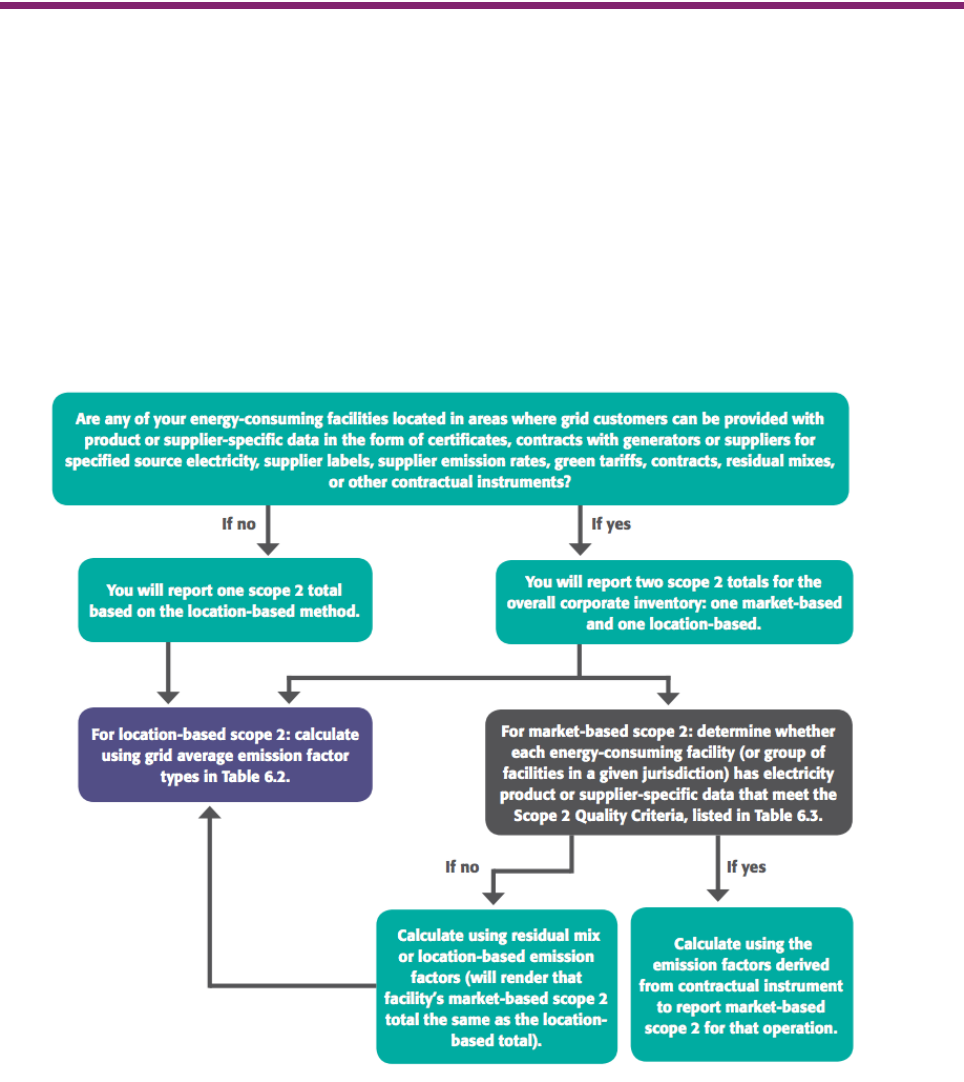
Page 10 of 27 @cdp | www.cdp.net
4 What scope 2 requirements impact your response?
‘Shall’ in the Scope 2 Guidance
The Scope 2 Guidance uses the word ‘shall’ for its minimum requirements. This chapter
summarizes each of the 'shall' statements in Chapter 7 of the Scope 2 Guidance (Accounting and
Reporting Requirements) and advises where in your CDP response your adherence to ‘shall’
statements can be evidenced.
4.1 Determining whether you shall dual report
Figure 6.1 in the Scope 2 Guidance gives a decision tree for determining whether you shall dual
report scope 2 emissions, and guides you through finding the appropriate emissions factors to
cover your energy purchasing.
The overwhelming majority of companies reporting to CDP disclose operations in at least one
country or area where grid customers can be provided with product or supplier-specific data in the
form of certificates or contracts with generators or suppliers for specified sources of energy,
supplier labels, supplier emission rates, green tariffs, contracts, residual mixes, or other contractual
instruments. Based on the 2023 disclosure cycle, only six out of more than 23,000 companies
disclosed operating exclusively in countries or areas that would imply they only needed to disclose
location-based scope 2 emissions.
In the 2023 disclosure cycle, only 26% of companies reporting to CDP dual reported their scope 2
emissions.
How to report in line with the Scope 2 Guidance to CDP:
In question 7.7, dual report your scope 2 emissions if dual reporting applies to you.
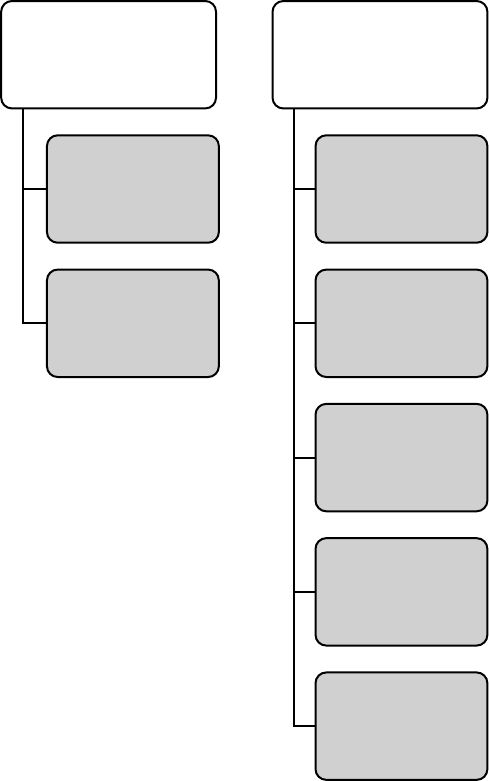
Page 11 of 27 @cdp | www.cdp.net
4.2 Choosing the right emissions factors (scope 2 data hierarchy)
After understanding whether dual reporting applies, you must select emissions factors to pair with
consumption of purchased energy. Location-based emissions will be calculated using location-
based emissions factors for different geographic areas paired with the consumption of purchased
energy in those geographic areas. Market-based emissions will be calculated using market-based
emissions factors you are entitled to through contractual instruments, paired with the consumption
of purchased energy consumed through each contractual instrument.
4.2.1 Emissions factors for market-based accounting
4.2.1.1 EACs and contracts
Energy attribute certificates (EACs) are standardized, tradable instruments issued to a unit of
energy generation (usually, by MWh). These certify the origin of energy and convey property rights
to energy attributes. They may be purchased with energy as a bundled supply or purchased
unbundled from energy. EAC registries exist in many countries. See Section 6 for country-level
resources on what EAC registries exist.
Where EACs have not been issued to the purchased energy, a contract can provide the emissions
factor. The contract must perform the equivalent tracking and property rights allocation functions
that EACs perform. Such contracts can be, for example, power purchase agreements (PPAs) with
grid connected generators and contracts with energy suppliers.
4.2.1.2 Supplier-specific emissions factor
Electricity suppliers supply electricity sourced from generation facilities that they operate and/or
that they have purchased from the electricity market for delivery to users. Suppliers may offer
specified products for electricity, certified through EACs or otherwise assigning specified
generation to specified customers contractually.
Location-based
method
1. Regional or
subnational grid
average
2. National
production
Market-based
method
1. Energy
attribute
certificates
(EACs) and
contracts
2. Supplier-
specific
emissions factor
3. Residual mix
4. Regional or
subnational grid
average
5. National
production
Page 12 of 27 @cdp | www.cdp.net
The remainder of a supplier’s electricity sales portfolio may not assign specified generation to
specified customers, but still reflects sales of electricity from a range of generation resources to a
group of energy consumers, from which a supplier-specific emissions factor can be defined.
From 6.11.3 in the Scope 2 Guidance:
“The emission factor must include all the electricity delivered by the supplier, including electricity
it generates as well as electricity it purchases from others. Some supplier emission factors only
include generation facilities owned by the supplier, which does not represent the full electricity
delivered. In addition, it should only include renewables for which RECs have not been passed
on to and retired by a third party.”
The Scope 2 Guidance recommends that supplier-specific emissions factors be calculated using
the methodology provided by the Climate Registry Electric Power Sector (EPS) Protocol. This
methodology produces supplier-specific emissions factors that account for the attributes of
generation from facilities operated by the supplier and from facilities operated by others (i.e.
purchases from the electricity market), with or without certification through EACs. In practice,
CDP understands many supplier-specific emissions factors consider the owned generation
portfolio only (which leads to double counting if the supplier purchases electricity for re-sale), or
additionally only attribute emissions to purchased and re-sold electricity using the residual mix
(see below), which is less accurate than what the EPS Protocol methodology enables.
4.2.1.3 Residual mix
A residual mix emission factor represents the emissions and generation that remain after
certificates, contracts, and supplier-specific factors have been claimed and removed from the
calculation. It can be a regional or national factor. Residual mix factors are essential for accurate
scope 2 accounting because they capture the emissions of the generation resources (usually,
mostly fossil fuel resources) that have not been actively claimed by other companies through
EACs, equivalent contracts, or supplier-specific emissions factors.
4.2.1.4 Other grid average emissions factors
Following the hierarchy, when emissions factors from certificates, contracts, suppliers or the
residual mix are not available, you must use regional or subnational grid factors and, as an option
of last resort, national production factors in market-based accounting. If these factors are present
in your market-based scope 2 total, you shall disclose their use.
How to report in line with the Scope 2 Guidance to CDP:
In in column 4 “Methodological details” in question 7.7, declare if any market-based
emissions were calculated using location-based emissions factors to cover the absence of
a residual mix or other more precise market-based emissions factor.

Page 13 of 27 @cdp | www.cdp.net
4.3 Scope 2 Quality Criteria
Please see section 7.5 in the Scope 2 Guidance for more detailed guidance on each
criterion.
CDP is frequently asked for its view around time matching (vintage) requirements (Quality Criterion
#4), and location matching (market boundary) requirements (Quality Criterion #5).
4.3.1 Vintage limitations for purchased electricity
For a twelve-month reporting period, CDP recommends a vintage limitation of six months before
the start of the reporting period, the twelve months of the reporting period, or three months after
the end of the reporting period. This is a 21-month vintage limitation common to some international
voluntary green power programs. CDP has not developed a view on this Quality Criterion for heat,
steam, or cooling.
All contractual instruments used in the market-based method for scope 2 accounting
shall:
1. Convey the direct GHG emission rate attribute associated with the unit of electricity
produced.
2. Be the only instruments that carry the GHG emission rate attribute claim associated
with that quantity of electricity generation.
3. Be tracked and redeemed, retired, or canceled by or on behalf of the reporting entity.
4. Be issued and redeemed as close as possible to the period of energy consumption to
which the instrument is applied.
5. Be sourced from the same market in which the reporting entity’s electricity-consuming
operations are located and to which the instrument is applied.
In addition, utility-specific emission factors shall:
6. Be calculated based on delivered electricity, incorporating certificates sourced and
retired on behalf of its customers. Electricity from renewable facilities for which the
attributes have been sold off (via contracts or certificates) shall be characterized as
having the GHG attributes of the residual mix in the utility or supplier-specific emission
factor.
In addition, companies purchasing electricity directly from generators or consuming
on-site generation shall:
7. Ensure all contractual instruments conveying emissions claims be transferred to the
reporting entity only. No other instruments that convey this claim to another end user
shall be issued for the contracted electricity. The electricity from the facility shall not
carry the GHG emission rate claim for use by a utility, for example, for the purpose of
delivery and use claims.
Finally, to use any contractual instrument in the market-based method requires that:
8. An adjusted, residual mix characterizing the GHG intensity of unclaimed or publicly
shared electricity shall be made available for consumer scope 2 calculations, or its
absence shall be disclosed by the reporting entity.

Page 14 of 27 @cdp | www.cdp.net
4.3.2 Market boundaries for electricity-related scope 2 claims
The Scope 2 Guidance does not give a concrete list of markets, but refers to the following
characteristic elements of markets:
Areas of production and consumption of energy that are linked by transmission
infrastructure.
Areas where certificates may be traded and redeemed, retired or canceled, as defined by
regulatory authorities and/or certificate issuing bodies.
Political or regulatory boundaries that define recognition of energy-related contractual
instruments.
The boundaries of the residual mix calculation.
This guidance is frequently misinterpreted or ignored by companies reporting market-based scope
2 emissions for their consumption of purchased electricity that undertake ‘global matching’.
In the absence of any global implementation of ‘market boundaries’ for purchased electricity,
CDP maintains a definition. A market for electricity-related scope 2 claims is an area where:
The laws and regulatory framework governing the electricity sector are consistent
between the areas of production and consumption.
There is physical interconnection between generation and consumption.
Utilities/energy suppliers recognize each other’s energy sourcing instruments and have
a system in place to prevent double counting of claims.
These conditions describe, almost universally, national borders.
CDP recognizes the following international markets for electricity-related scope 2 claims:
1. The single market between the United States and Canada.
2. The single market in Europe, defined below.
Countries in Europe meeting all the following conditions form a market for electricity-related
scope 2 claims:
1. The country is in the EU single market; and
2. The country is a member of the Electricity Scheme Group and issues European
Energy Certificate System (EECS) Guarantees of Origin; and
3. The country has a grid connection to another country meeting the first two rules.
As of March 2024, the European countries meeting these criteria to form a single market for
electricity-related scope 2 claims are:
Austria
Germany
Norway
Belgium
Greece
Portugal
Croatia
Hungary
Slovakia
Czech Republic
Italy
Slovenia
Denmark
Latvia
Spain
Estonia
Lithuania
Sweden
Finland
Luxembourg
Switzerland
France
Netherlands
European microstates*
*The Channel Islands, Andorra, Liechtenstein, Monaco, San Marino, and Vatican City are included in CDP’s view of
a market for electricity-related scope 2 claims in Europe despite not meeting all three European market criteria.
This because they have limited domestic electricity generation and instead import much of their electricity, including
EECS GOs, from bordering Electricity Scheme Group member countries. Here, companies may make electricity-
related scope 2 claims based on ex-domain cancellation of EECS GOs.
Page 15 of 27 @cdp | www.cdp.net
How to report in line with the Scope 2 Guidance to CDP
In question 7.7, you may describe how much of your market-based emissions disclosure
does not meet the Scope 2 Quality Criteria. Use CDP’s market boundary definition for
electricity purchasing. As in Section 0, declare if a location-based factor was used in the
market-based total to cover the absence of a residual mix for any energy consumption.
4.4 If you consume energy from facilities that you own/operate
Energy you consume from facilities you own/operate is normally not associated with scope 2
because the your ownership puts the facility in your scope 1 boundary. However, if the attributes of
the energy you consume from your facilities are not retained by your organization (e.g. any
certificates are sold, or a contract entitles another organization to the attributes), then you shall
report market-based scope 2 emissions for this energy consumption (using the residual mix
emissions factor if available). See Table 6.1 in the Scope 2 Guidance for more information.
4.5 If you consume purchased energy generated from biofuels
Biogenic CO2 generation emissions associated with your energy purchasing are not accounted for
in scope 2. These emissions are reported separately from the scopes. See 6.12 in the Scope 2
Guidance. You may report on your biogenic CO2 emissions in question 7.12.1 in the CDP
Corporate Questionnaire.

Page 16 of 27 @cdp | www.cdp.net
5 Optional scope 2 disclosures
Please read Chapter 8 in the Scope 2 Guidance for more detail on GHG Protocol’s
recommended reporting on instrument features and policy context for scope 2.
How can companies go further with their Scope 2 reduction action? Section 11.4 of the GHG
Protocol Scope 2 Guidance presents a range of procurement choices where companies can bring
to bear their financial resources, creditworthiness, scale of consumption, technical knowledge,
collaboration, or other approaches in order to help overcome traditional barriers to scaling the
development of low-carbon energy.
These include a) Direct contracting with new low-carbon energy projects, b) working with electricity
suppliers for new projects, c) establishing “eligibility criteria” for corporate energy procurement,
relating to specific energy generation features or policy interactions that align with new low-carbon
energy projects, and d) incremental funding or donations.
Companies can also help drive more impactful procurement by choosing projects based on their
commissioning year. Progress towards zero carbon grids at scale requires new renewable
electricity generation and focusing procurement on new projects can help support new generation.
Matching procurement geographically and/or temporally is another way to go further. Matching an
organization’s consumption of electricity with their procurement at e.g. the regional and the hourly
level will create demand for the necessary low-carbon energy generation at specific times of day in
their specific regions. This may require additional labels or attributes, such as hourly EACs issued
under EnergyTag’s Granular Certificate (GC) Scheme Standard.
Additional, voluntary labels are a way for companies to do more with their purchases. Green-e
certification is one example. It is a leading certification program for renewable energy in North
America. The additional label certifies that the renewable energy must be generated from new
facilities, marketed with complete transparency and accuracy, and delivered to the purchaser, who
has sole title.
The GHG Protocol Scope 2 Guidance mentions the EKOenergy label
1
as an option, as it is a mark
of quality which comes on top of tracking certificates. Electricity sold with the EKOenergy label
fulfils strict environmental criteria and raises funds for new renewable energy projects.
Involvement, transparency and ‘deeds not words’ are important principles of EKOenergy’s work.
Another example is Gold Standard, an international standard for climate security and sustainable
development. Gold Standard
2
has developed an ecolabel for attribute tracking systems including
for use in combination with the I-REC Standard, EECS-GOs in Europe and other national/regional
systems adherent to their quality standards. The Gold Standard REC label includes stringent
requirements to ensure renewable energy projects meet highest safeguards, are inclusive of
stakeholders, contribute to sustainable development priorities, and generate new renewable
energy that could not have otherwise been realized.
5.1.1 How to report in line with the Scope 2 Guidance to CDP
Much of this optional reporting can be disclosed in 7.30.14 (7.30.17 and 7.30.18 for RE100
companies). Chapter 8 of the Scope 2 Guidance also calls for country/area or other
breakdowns of scope 2 emissions and underlying energy consumption, which are captured
by CDP throughout the corporate questionnaire.
1
https://www.ekoenergy.org/ecolabel/
2
https://www.goldstandard.org/our-story/sector-renewable-energy

Page 17 of 27 @cdp | www.cdp.net
6 Country/area resources for emissions factors
6.1 Location-based emissions factors
Many countries’ governments will publish a scope 2 location-based emissions factor for their
grid(s).
The International Energy Agency (IEA) maintains a list of scope 2 location-based emissions
factors.
6.2 Energy attribute certificate registries
EACs from the following systems appear in companies’ reporting to CDP:
EAC system
Governance
Country/areas
served
Additional resources/comment
Renewable
Energy
Certificate
(REC)
Government-run
U.S. and
Canada
The North American REC in reality is not a
single EAC system but is made up of ten
registries with varying boundaries for the
generators eligible to register on them. For
more information, see
https://www.nrel.gov/docs/fy15osti/64558.pdf
Guarantee of
Origin (GO)
Government-run
Europe
The Association of Issuing Bodies (AIB)
maintains a system called the European
Energy Certificate System (EECS), which
standardizes GO issuance and trade across
AIB member states in the Electricity Scheme
Group. These states issue EECS GOs. GOs
issued by non-member states are sometimes
referred to as ‘national GOs’, and are not part
of a harmonized system.
Renewable
Energy
Guarantee of
Origin (REGO)
Government-run
United Kingdom
T-REC
Independent
Taiwan, China
Non-Fossil
Certificate
(NFC)
Government-run
Japan
Green Electricity
Certificate
Independent
Japan
J-Credit
Government-run
Japan
Tradable
Instruments for
Global
Renewables
(TIGR)
Independent
Green Electricity
Certificate
(GEC)
Government-run
China
I-REC for
Electricity
Independent
At least 48
countries
https://www.trackingstandard.org/product-
code/electricity/
Large-scale
Generation
Certificates
(LGCs)
Government-run
Australia
https://www.cleanenergyregulator.gov.au/RET/
Scheme-participants-and-industry/Power-
stations/Large-scale-generation-certificates
Small-scale
Technology
Certificates
(STCs)
Government-run
Australia
https://www.cleanenergyregulator.gov.au/RET/
Scheme-participants-and-industry/Agents-and-
installers/Small-scale-technology-certificates
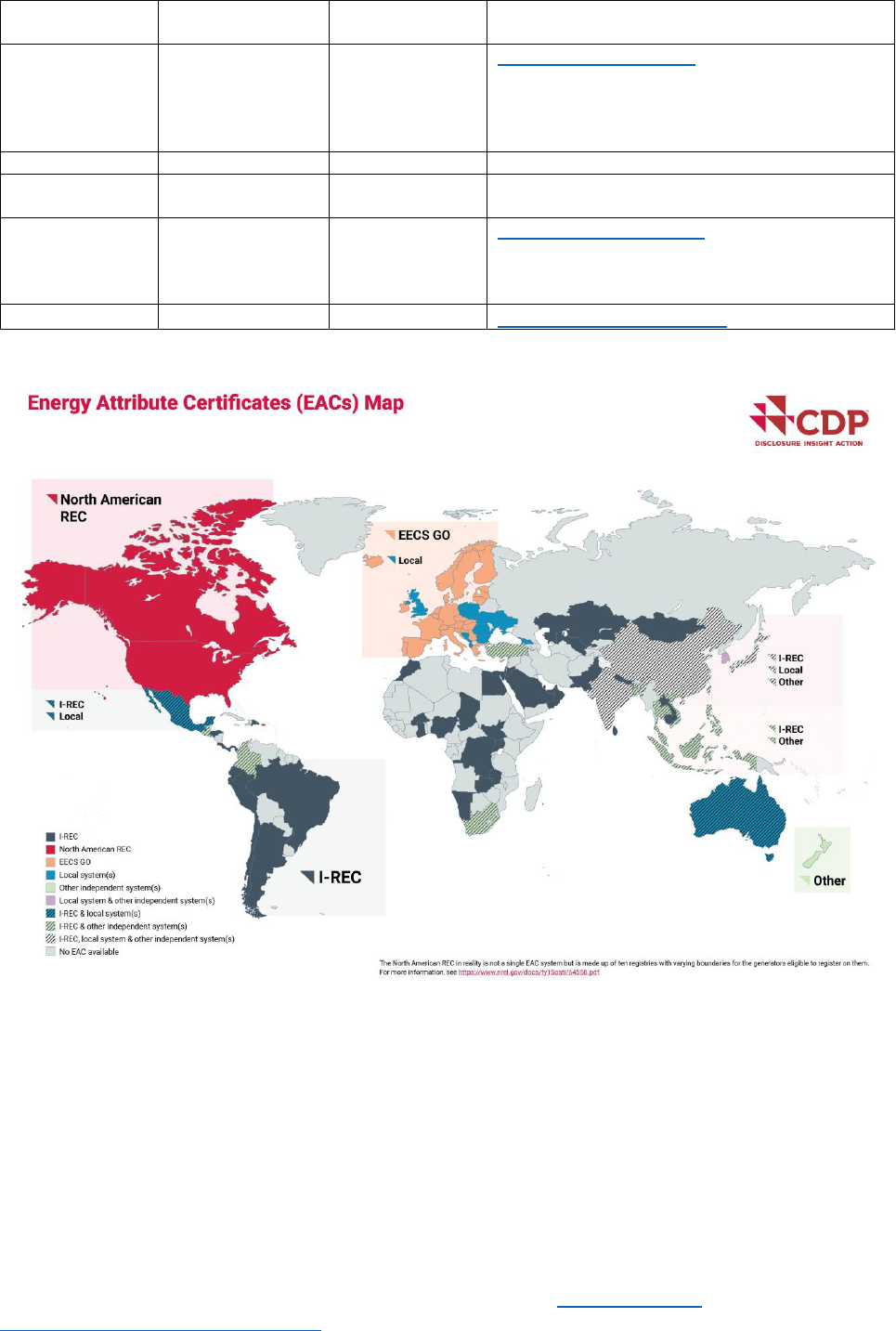
Page 18 of 27 @cdp | www.cdp.net
EAC system
Governance
Country/areas
served
Additional resources/comment
New Zealand
Energy
Certificate
System
(NZECS)
Independent
New Zealand
https://bravetrace.co.nz/
Indian REC
Government-run
India
Korean REC
Government-run
Republic of
Korea
Yenilenebilir
Enerji Kaynak
Garanti Sistemi
(YEK-G)
Independent
Turkey
https://yekgnedir.com/en/
zaREC
Independent
South Africa
https://www.recsa.org.za/
6.3 Supplier-specific emissions factors
CDP is not resourced or organized to detail all countries where supplier-specific emissions factors
are available. Generally, fuel mix disclosure (FMD) legislation like what exists in the European
Union is a form of evidence that supplier-specific emissions factors are available. However, FMD
legislation may typically only require a supplier to publicly disclose the generation mix and
emissions profile of the generation that it owns, not the total supply of energy to consumers
sourced from both its own generation facilities and energy markets.
6.4 Residual mixes
Residual mixes for European countries are published by AIB: https://www.aib-
net.org/facts/european-residual-mix

Page 19 of 27 @cdp | www.cdp.net
Green-e publishes residual mixes for U.S. eGrid subregions that remove Green-e® Energy sales.
These are incomplete residual mixes, since they only account for and remove specified energy
certified by Green-e, which does not represent all specified energy sales.
The International Tracking Standard Foundation (I-TRACK) is working on calculating residual
mixes for countries with I-REC registries. It is unclear whether these residual mixes will account
only for and remove energy certified by I-RECs or whether they will also account for and remove
energy tracked through other EAC systems or contracts.
Residual mixes are not widely available.

Page 20 of 27 @cdp | www.cdp.net
7 Frequently Asked Questions
7.1.1.1 Can I count a GO/REC/I-REC/TIGR towards my Scope 2 market-based target?
Yes.
7.1.1.2 Can I count certified emissions reductions (CERs) or verified emissions reductions (VERs)
towards my Scope 2 market-based target?
No.
7.1.1.3 I buy special European credits from a label with guaranteed additionality, but they do not
follow the GO system, can I count them towards my target?
CDP does not recommend that any electricity within the EU27 should be accounted for unless it is
using European Guarantees of Origin.
7.1.1.4 Can I use European GOs to account for electricity consumption in USA?
No, as this wouldn’t comply with the market boundary criteria as described in section 4.3.2. Please
see the next question for more details.
7.1.1.5 Why can’t I use RECs or certificates produced in certain jurisdictions in other
jurisdictions?
As a minimum condition, you should use RECs that are within the same market boundary as
described in section 4.3.2, e.g. if you have operations in North America, you are expected to use
RECs (USA and Canada) and not Guarantees of Origin (GOs), which are the instruments used in
Europe. Likewise, your European operations are expected to use GOs and not North American
RECs or other instruments from other geographies. Unlike offsets, electricity tracking
instruments are not expected to become global commodities, but regional commodities.
This is because there are physical restraints to the transmission of electricity that should be
respected by the tracking instrument trade. A good example is the case of islands, for example
Iceland. There is no connection between Iceland and mainland Europe. As such, buying Icelandic
GOs as a supply of European based consumption is seen as a problematic practice. These
considerations could be extended to reflect transmission capacity between countries, which could
add layers of complexity that, at the current stage of development of the system, are still difficult to
address. The best way to address them is to source renewable energy from local renewable
sources.
7.1.1.6 Can I use UK green tariffs in order to account for lower Scope 2 emissions?
Yes, depending on the tariff chosen. Some tariffs are 100% renewables, some are not, but the
supplier has the obligation to inform the customer about it.
Can I use an emission factor provided by my supplier?
Yes, in your market-based Scope 2 figure.
7.1.1.7 Where can I find corrected emission factors for the grid?
You should check with the relevant grid authority or regulator for up-to-date corrected emission
factors where available. For example, the AIB has calculated corrected grid emission factors for all
EU countries.
Page 21 of 27 @cdp | www.cdp.net
7.1.1.8 I purchase offsets that are based on renewable energy generation, can I account for these
in my Scope 2 figure?
No. In this case the origin of the offsets doesn’t really matter. According to the GHG Protocol
Corporate Standard, offsets should be reported as separate information from the gross emission
figures that Scope 1, 2 and 3 represent.
You can report your use of offsets in questions 7.79 and 7.79.1 where you can provide details of
any project-based carbon credits cancelled within the reporting period as well the purpose of those
purchases.
7.1.1.9 Can RECs/GOs/IRECs/TIGRs be reported in 7.79?
Question 7.79 only applies to companies that have issued the carbon credits or who have
purchased them for the purposes of compliance or as voluntary carbon offsets. Therefore, they
cannot be reported here.
7.1.1.10 If we purchased more RECs than the amount of energy we actually consumed (1 REC=
1MWh), can we then enter a negative Scope 2 figure?
No. RECs are not offsets – they are a way to attribute an organization’s energy purchase to a
renewable source and claim the low carbon benefit. That is why RECs are a regional product - the
energy used should be in the same market boundary as the energy produced and represented by
the certificate. Even if they were offsets, in accordance with the GHG Protocol, CDP asks
companies to report on gross emissions that do not take offsets under consideration. None of the
emission fields in the CDP questionniarewill allow a negative response for this reason.
7.1.1.11 We operate in a country that has 100% electricity from hydroelectricity. How should we
report this?
If the fuel mix in your national grid has a large proportion of renewable energy, then naturally your
carbon emissions per MWh are going to be lower than in countries that have a higher proportion of
fossil fuel-based sources in the grid mix, and therefore your Scope 2 emissions calculated with the
location-based method will be low. However, you should not report renewable energy usage which
is sourced from grid mix as active renewable energy procurement.
In countries where contractual instruments do exist, companies should report Scope 2 (market-
based) emissions using the emission factor provided by the contractual instruments, or the residual
mix emission factor. If your organization is not directly purchasing energy from renewable energy
providers, you should be using the residual mix emission factor. Only in countries where
contractual instruments or residual mix emission factors do not exist, can companies use the grid
average emission factor.

Page 22 of 27 @cdp | www.cdp.net
8 Worked examples
8.1 Example 1 – On-site production of non-grid connected
renewable electricity owned by another organization with no
tracking instruments generated.
It is becoming common for an organization to supply the space, while another organization
implements and manages the renewable energy installation that produces electricity. This
electricity can then be fed to the organization that is providing the space and consumed “on the
spot”. For the sake of this example we will assume the following energy profile of Organization 1:
It has multiple facilities (remote equipment, e.g. diesel generators) around the world that
consume small amounts of electricity, as well as large buildings that are grid connected;
It has installed solar panels at its facilities in Argentina which are owned and managed by
another organization; the 15,000 MWh generated by these solar panels are supplied to
Organization 1 and are subject to an agreement between the two parts which is equivalent to a
sale;
Their energy supplier in the USA provides them with a supplier-specific emissions rate;
For all other electricity, the organization is being supplied by the grid and does not have any
special agreements with its suppliers or buy and retire any type of certificates.
(7.16) Break down your total gross global Scope 1 and 2 emissions by country/region.
Country/Region
Scope 2,
location-
based (metric
tons CO
2
e)
Scope 2,
market-based
(metric tons
CO
2
e)
United States of
America
19,000
22,000
Canada
10,000
11,000
United Kingdom
30,000
32,000
Spain
10,000
13,000
Argentina
10,000
10,000
(7.30.1) Report your organization’s energy consumption totals (excluding feedstocks) in
MWh.
Since the organization is reporting a market-based Scope 2 figure, they should also use this in
7.30.1. They will thus use market-based methods to calculate the MWh from renewable sources for
this question. The table below details their calculations.
Country/region
Total
MWh
Emissions Factor
used
MWh from
renewable sources
MWh from non-
renewable sources
United States of
America
100,000
Supplier-specific
emissions rate (6.5%)
6,500
93,500
Canada
100,000
None
0
100,000
United Kingdom
140,000
Residual Mix (8,93%)
12,502
127,498
Spain
100,000
Residual Mix (7.51%)
7,510
92,490
Argentina
100,000
Contract
15,000
85,000
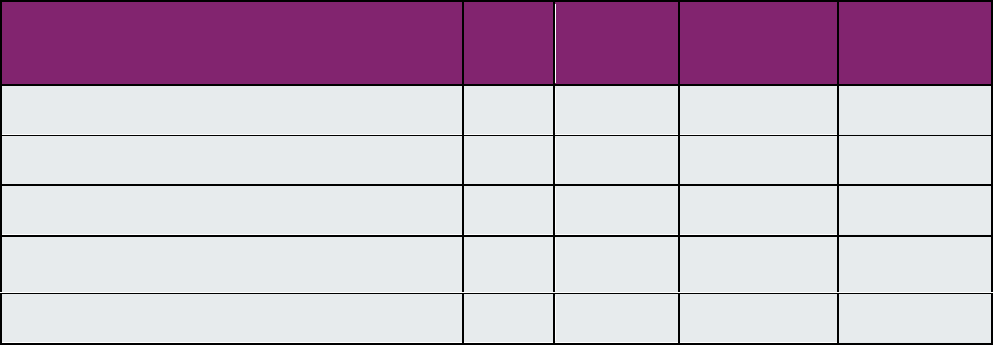
Page 23 of 27 @cdp | www.cdp.net
In Canada, they do not have energy certificates or contracts, supplier/utility-specific emission rates,
or a detailed residual mix. Therefore, to avoid double-counting by using grid average emissions
factors, they have assumed 0 MWh from renewable source. Similarly, in Argentina they have no
active sourcing outside of their contract and have assumed 0 additional MWh from renewables as
they do not have access to anything other than grid average emissions factors.
Based on these calculations, they would report the below in 7.30.1:
Activity
Heating
value
MWh from
renewable
sources
MWh from
non-renewable
sources
Total MWh
Consumption of fuel (excluding feedstock)
HHV
0
1,500,000
1,500,000
Consumption of purchased or acquired electricity
41,412
498,588
540,000
Consumption of purchased or acquired steam
0
100,000
100,000
Consumption of self-generated non-fuel
renewable energy
0
0
0
Total energy consumption
41,412
2,098,588
2,140,000

Page 24 of 27 @cdp | www.cdp.net
(7.30.14) Provide details on the electricity, heat, steam, and/or cooling amounts that were accounted for at a zero or near-zero emission factor in
the market-based Scope 2 figure reported in 7.7.
Country/area
of low-
carbon
energy
consumption
Sourcing
method
Energy
carrier
Low-carbon
technology
type
Low- carbon
energy consumed
via selected
sourcing method
in the reporting
year (MWh)
Tracking
instrument
used
Country/area of
origin (generation) of
the low-carbon
energy or energy
attribute
Are you able to
report the
commissioning or re-
powering year of the
energy generation
facility?
Commissioning
year of the energy
generation facility
Comment
Argentina
Purchase
from an on-
site
installation
owned by a
third party
(on-site
PPA)
Electricity
Solar
15,000
Contract
Argentina
Yes
2017
We have
established a
contract with Solar
Organization, a
provider of solar
energy solutions,
where they own
and manage all our
on-site installations
and we buy the
electricity from
them.
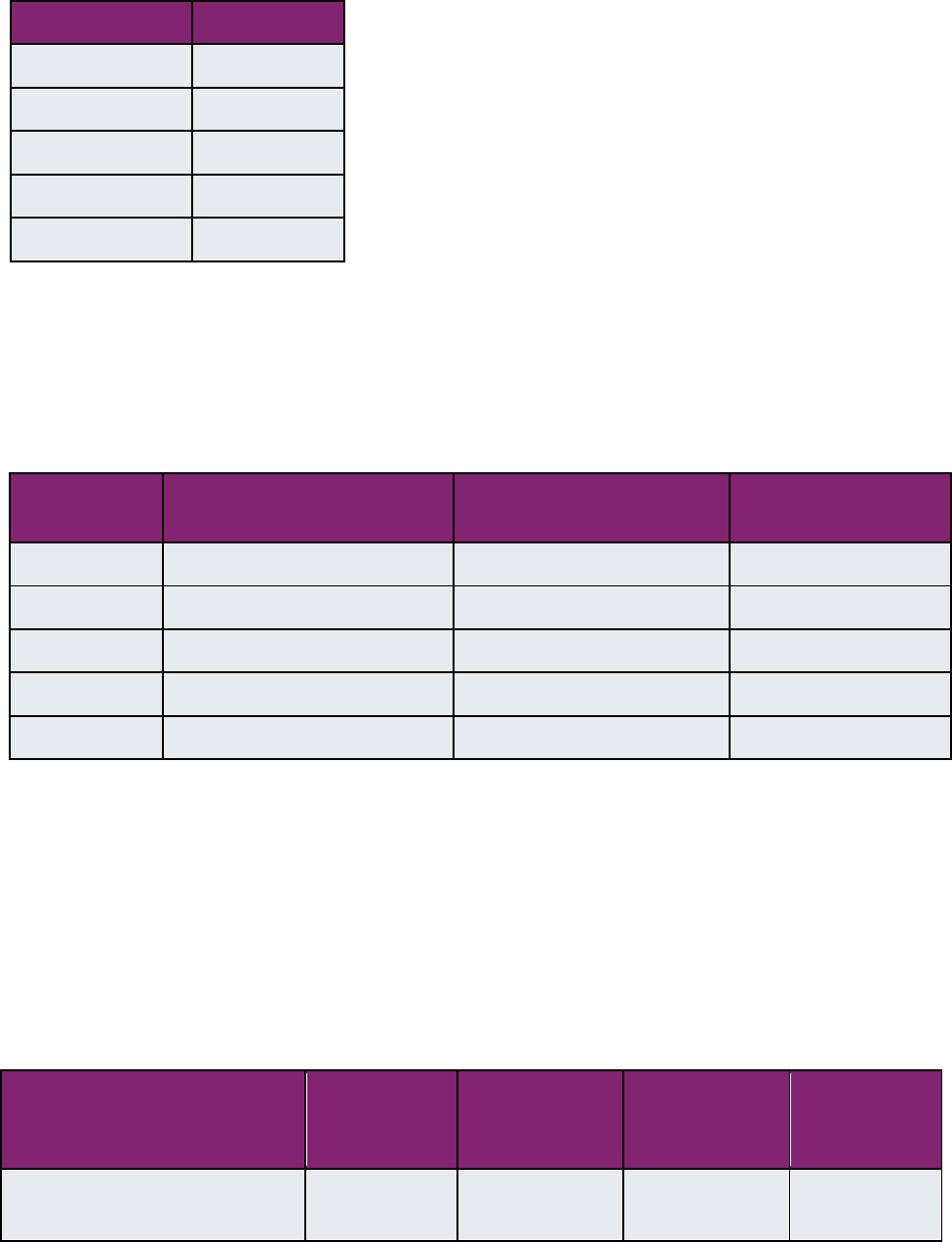
Page 25 of 27 @cdp | www.cdp.net
8.2 Example 2 – A organization purchasing RECs in the USA
Organization 1 is a USA based organization with installations in Oklahoma, California, Upstate
New York and Colorado. It consumes the following amounts of electricity:
Its Oklahoma facility also purchases 100,000 RECs (1 REC=1MWh) from an Oklahoma wind farm.
The facility is within the MROW eGRID sub-region, so when doing its calculations to compute the
electricity Scope 2 market-based footprint for MROW it uses the Green-e residual mix for the
portion of power it does not have RECs, this is 200,000 – 100,000 = 100,000 MWh. The 100,000
MWh for which it has RECs are computed using the specific RECs emission factor, which in this
case because it is a renewable energy source, will be assumed to be 0 t CO
2
e/MWh. Thus, the
footprint, calculated for each eGRID sub-region will look like the following table:
Total MWh
lb/MWh (Green-e Residual
Mix 2019)
t CO
2
e
MROW
(200,000 – 100 000) = 100,000
1,149.60
52,145
CAMX
150,000
461.46
31,397
RMPA
40,000
1,274.88
23,131
NYUP
30,000
232.36
3,162
Total USA
320,000
-
109,835
Thus, compared to the scenario where RECs would not have been bought, Organization 1 has
reduced its electricity market-based Scope 2 footprint by 64,644 t CO
2
e. The organization has also
consumed 10,000MWh of fuel (for energy purposes) during the reporting year.
Based on the published Green-e Residual Mix, the organization has calculated the % of MWh from
renewable sources in the eGRID sub-regions (CAMX = 44%, MROW = 30%, NYUP = 42%, RMPA
= 30%). Using these percentages, it calculates its MWh from renewable sources. Its CDP
disclosure would look like this:
(7.30.1) Report your organization’s energy consumption totals (excluding feedstocks) in
MWh.
Activity
Heating value
MWh from
renewable
sources
MWh from non-
renewable
sources
Total MWh
Consumption of fuel (excluding
feedstock)
HHV
0
10,000
10,000
MWh
MROW
200,000
CAMX
150,000
RMPA
40,000
NYUP
30,000
Total USA
420,000

Page 27 of 27 @cdp | www.cdp.net
(7.30.14) Provide details on the electricity, heat, steam, and/or cooling amounts that were accounted for at a zero or near-zero emission factor in
the market-based Scope 2 figure reported in 7.7.
Sourcing
method
Energy
carrier
Low-carbon
technology
type
Country/area
of low-carbon
energy
consumption
Tracking
instrument
used
Low- carbon
energy
consumed via
selected
sourcing
method in the
reporting year
(MWh)
Country/area of
origin
(generation) of
the low-carbon
energy or energy
attribute
Commissioning
year of the energy
generation facility
Comment
Unbundled
energy
attribute
certificates
(EACs)
purchase
Electricity
Wind
USA
US-REC
100,000
USA
2020
Organization 1 has
bought 100,000 RECs
from an Oklahoma wind
farm and reflected that in
its total Scope 2 footprint
provided in 7.7. This led
to a reduction of 64,644 t
CO
2
e from its market-
based footprint.

